POST-CONFERENCE REPORT

- The 2005 WSEAS
Int. Conf. on DYNAMICAL SYSTEMS and CONTROL (CONTROL '05),
- The
2005 WSEAS Int.Conf. on REMOTE SENSING
(REMOTE'05),
- and the 2005 WSEAS Int.Conf. on ENVIRONMENT, ECOSYSTEMS and DEVELOPMENT(EED'05),
- were held in Venice (Venezia), Italy, from November 2 till November 4, 2005
Photo of the Organizers during the Banquet
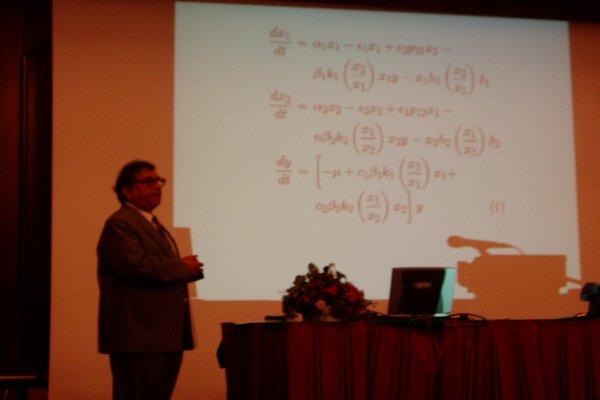
Over than 200 participants from all over the world attended these conferences. The Opening of the Conferences was really impressive with famous keynote speakers as follows
Keynote Speakers
Professor D. H. Staelin
Department of Electrical Engineering and Computer Science,
Massachusetts Institute of Technology (MIT),
USA
Generic Issues in Remote Sensing Retrievals: Examples from Passive
Microwave Satellite Sensing of Precipitation
Abstract:
Remote sensing yields estimates of environmental parameters based on
intercepted radiation. The broad underlying physical and mathematical
principles of remote sensing are illustrated here in the context of passive
microwave remote sensing of the atmosphere and of precipitation. The topics
addressed include system architecture, retrieval architecture and methods,
data compression, image processing, data fusion, and sensor design. Recent
progress in the area of precipitation retrievals using polar-orbiting and
geostationary millimeter-wave imaging spectrometers is highlighted.
Prof. Hashem Akbari
Leader of the Heat Island Group
Lawrence Berkeley National Laboratory,
University of California, Berkeley, USA
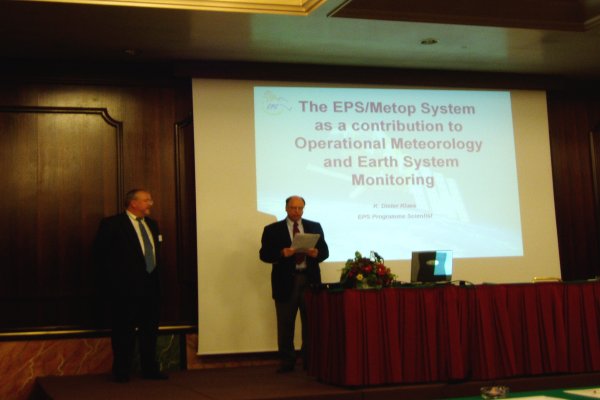
Prof. K.D.Klaes presenting his Invited Keynote Lecture
Prof. K. D. Klaes
Head of the EPS Support Science Team in the MET Division at EUMETSAT
The EPS/Metop System as a contribution to Operational Meteorology and
Earth System Monitoring
Abstract: The EUMETSAT Polar System (EPS) is the European contribution to the joint
European/US operational polar satellite system (Initial Joint Polar System (IJPS)).
It covers the mid-morning (AM) orbit, whereas the US part continues to cover
the afternoon (PM) orbit. The future EUMETSAT satellites of this new polar
system are the METOP (METeorological OPerational Satellite) satellites,
jointly developed with ESA. They will deliver high-resolution sounding and
also high-resolution imagery in global coverage. Three METOP spacecraft are
foreseen for a sun synchronous orbit in the 9:30 AM equator crossing
(descending node). They will provide polar data from 2006 onwards. The EPS
programme is planned to cover 14 years of operation. This paper will give an
overview on the EPS mission and the products and services provided to users.
The EPS Programme comprises the space segment indicated above with
associated launch services and a full ground segment. The space segment is
developed in co-operation by EUMETSAT and the European Space Agency (ESA),
and also the French Centre National d’Etudes Spatiales (CNES). The launch of
the first Metop satellite is planned in the second quarter of 2006. The
Metop-1 Programme includes the development of some payload components as the
GOME-2 (Global Ozone Monitoring Experiment), ASCAT (Advanced Scatterometer)
and the GRAS (GPS Radio Occultation Sounder), which are in the heritage of
successful research missions. Further components of the Metop payload are an
AVHRR (Advanced Very High Resolution Radiometer), and the Advanced TIROS
Operational Vertical Sounder (ATOVS) package, composed of HIRS-4 (High
Resolution Infrared Radiation Sounder), AMSU-A (Advanced Microwave Sounding
Unit - A) and MHS (Microwave Humidity Sounder). MHS is an EUMETSAT
development. It replaces the AMSU-B instrument in the ATOVS suite, while
NOAA provides the ATOVS and AVHRR instruments. These instruments assure the
continuity to the ATOVS suite flown on the NOAA-KLM satellites. The IASI
instrument is new technology, developed by CNES and provides high spectral
resolution bounding capabilities in the infrared. All these components
support operational meteorology and climate monitoring, and hence provide a
contribution to Global Earth System Monitoring.
Professor C. G.
Helmis
Department of Applied Physics, Faculty of Physics,
National and Kapodestrian University of Athens, Greece
A SODAR-based study
of the mean and turbulent characteristics of the
vertical structure of the marine Atmospheric Boundary Layer
Abstract:
In the recent years, the study of the Marine Atmospheric Boundary Layer (MABL)
has been the topic of main interest for Atmospheric Physics. The Coupled
Boundary Layers Air-Sea Transfer Experiment in Low Winds (CBLAST-Low)
project aims to the understanding of the air-sea interaction and the coupled
atmospheric and oceanic boundary layer dynamics at low wind speeds. As part
of the CBLAST-Low experiment, extensive ground-based measurements on
Nantucket Island, MA, USA, were performed during summer 2003. The main
objectives of the measurements were to study the mean and turbulent vertical
structure of the MABL and to evaluate mesoscale models, such as the Navy’s
operational forecast model, COAMPS.
A suite of in situ and remote sensing instruments designed to fully
characterize the changing boundary layer properties was deployed in the
CBLAST-Low Nantucket experimental site. This instrument suite includes an
Acoustic Radar (SODAR) system to measure the vertical profiles of the
horizontal wind speed and direction, the vertical (w) and the two horizontal
wind components (u) and (v), the standard deviations of the three wind
components, the momentum fluxes of the wind components ( and ) and the
atmospheric static stability, at 30 minutes interval, with a vertical
resolution of 40 m and a range up to the height of 800m. Also two
meteorological masts, equipped with fast and slow sensors at four different
levels, provide information on the mean wind, temperature, and relative
humidity and the momentum, sensible heat and latent heat fluxes.
In this invited talk a review regarding MABL will be given and the main
objectives of the experimental campaign with results of the study of the
structural characteristics of the mean and turbulent MABL will be presented.
The measurements of the mean wind, turbulence variances and fluxes from the
SODAR revealed the variation of the boundary layer stability and turbulence
characteristics in response to the background flow. Also large values of the
momentum fluxes at higher levels were estimated, presumably associated with
the shear forcing near the very frequently developed marine low-level jet
(wind maximum). The SODAR measurements, with high time and space resolution,
and the other relevant measurements from this experimental campaign give
information in order to understand the momentum transport and the TKE
balance of the jet-related boundary layer under different meteorological
conditions.
Professor Martin van den Toorn
Delft University of Technology, Faculty of Architecture,
Dept. of Landscape Architecture, The
Netherlands
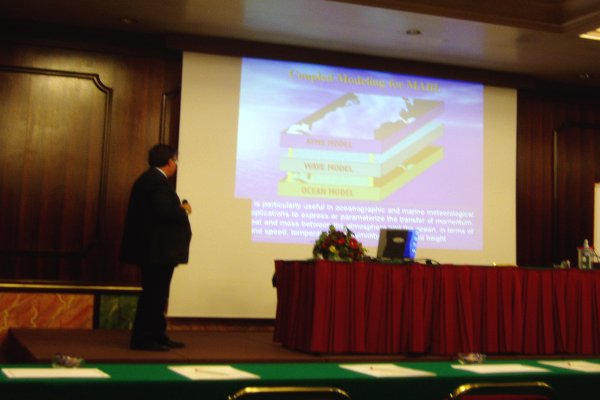
Professor A. Perdikoulis
University of Tras-os-Montes e Alto Douro, Portugal
Dynamics in Urban Planning: Examples from Practice
Abstract:
What chances of success
do we expect to have if we suggest interventions in a city, when we have no
clear idea of its function? How many “diagnostic studies” are static, and
reveal merely un-related facts? How do we all share the same assumptions for
“the way things work” in a particular city? Starting
with J.W. Forrester’s Urban Dynamics (1969), the field of System Dynamics
has demonstrated a special way of thinking about urban systems: analytic,
exploratory, experimental, dynamic, model-based, and crossdisciplinary.
Along the years, many scientists and practitioners have produced similar
work, which is now coming to a mature stage as an alternative methodology
for urban planning. This presentation illustrates
the core innovation of the System Dynamics methodology of urban planning —
i.e. dynamic urban models — and their advantages and hidden costs. The
target audience is people who plan, or help to plan, for a community at the
city or municipal scale — respecting the size variations that may be
involved. The three examples of dynamic urban
models are selected from three typical urban planning issues:
1. Transportation: Problems of traffic congestion and air quality
2. Water: Problems of water stock depletion and quality
3. Housing: Housing needs and provisions
All three examples present the special feature of “structure and function
diagrams”, which allow the planners to:
• express their problems clearly, explicitly marking resources, actors, and
their dynamic relations
• express and share their assumptions clearly
• understand, and even debate the origin of the registered problems (linear
processes? feedback loops?)
• dicover, share, decide on, and mark their (common) objectives clearly
• explore options for, and develop possible action (policy scenarios) that
might be capable of reaching the set objectives
• simulate those scenarios to judge their absolute or relative capability
and/ or efficiency
To create and use successfully dynamic urban models requires some training
to become familiar with key notions such as causality, abstraction,
feedback, and delays. The System Dynamics methodology for urban planning
includes this knowledge, and much more. Thus, however different or
unconventional, the new methodology constitutes an alternative with clear
advantages, worth any urban planner’s attention.
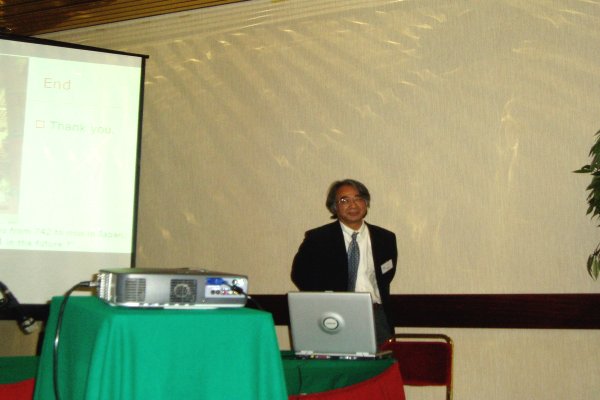
Prof.
Minetada
Osano presenting his Invited Paper
Many parallel sessions with important contributions from invited authors
took place along with several discussions.
There existed Student Competition and the Prizes for the Best Students' papers were given after the conference.
On the other hand, the authors of the best of the accepted papers received an invitation for sending an extended version to the WSEAS reputable International Journals.
The conferences were held in a 4-Star Hotel in
Venezia where the WSEAS participants had discount rates in the room
prices.
Venice, Italy: Occupying 117 islands in the azure waters of the
Adriatic, this lagoon city is a watery maze of grand canals, 177 smaller canals,
over 400 bridges and the world's most famous sandbar, the Lido. Though
thoroughly walkable, getting around Venice is a mesmerizing experience aboard
the city's variety of public transport boats, the vaporetti or smaller (and more
expensive) motoscafi. The very expensive gondola ride is suggested more for a
romantic interlude . Venice's enticing, exotic beauty, typified by the Byzantine
architecture , enormous stained glass windows rising along the Grand Canal and
Venetian Carnival masks with their wry, knowing smiles - attest to the city's
historic role as a great Eastern trader. Venice's legendary maritime heroes,
such as Marco Polo, ploughed the Levantine trading routes. The entire
Mediterranean flowed through the Venetian Republic, adorning the city in the
splendors that illuminate it today. Modern pleasures are not absent in Venice.
Year round, first-rate art exhibitions pass through the city's ode to modernism
- the Peggy Guggenheim Museum. Before the unfortunate fire that closed (with
plans to rebuild) the Fenice Des Artiste Opera House, this venue was a must stop
for the likes of Pavorotti and Placido Domingo. And the city's 70,000
inhabitants do much more than meditate upon the glories of Venice's past -
you'll no doubt see them sitting beside you at the Cafe Florian, on San Marco
Square, or selling leather goods, hand blown, Murano glass and Armani ties at
the city's many fashionable boutiques.
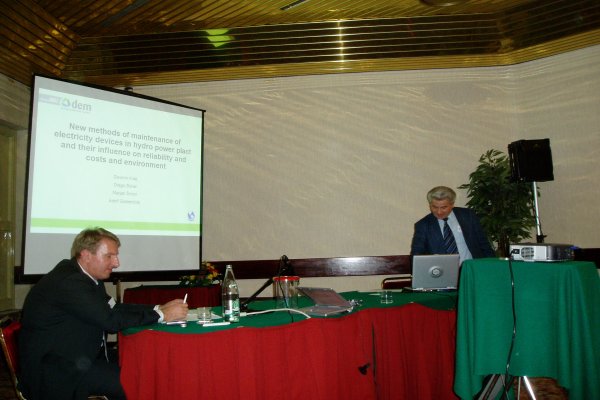
SCIENTIFIC
PART:
Conference Statistics:
Submitted papers:
389
Accepted papers:
243
from these 243 papers, the WSEAS Committee
approved additional Journal Publication for the best papers of the
conferences.

Review Process:
Each paper was reviewed at
least by
3 independent reviewers.
The WSEAS
Secretariat sent each paper to 5 reviewers.
Some papers received review
from 5 different referees. The WSEAS Secretariat
had
forwarded to the responsible for the correspondence author these comments
by personalized emails.
The full list of the reviewers
will be available in the web page:
http://www.worldses.org/reviewers.htm
Only authors of those papers, which are
found to have very positive response from 3 referees and which are modified
satisfactorily to take into account all the comments of (at least 3)
referees of the conference are invited to send an extended version in the WSEAS
Journals (WSEAS Transactions). The extended version is checked again by two
additional referees and a rejection or acceptance is notified to the authors.
WSEAS Organizing Committee therefore congratulates those, who have been able to
get the distinction of having their paper published in the Transactions.
WSEAS
sent
a full report of the whole review process and the whole correspondence
to the following international indexes that have recognized officially the
Validity and the Reputation
of the WSEAS Conferences:
* ISI (ISINET),
*
INSPEC (IEE),
* AMS (American Mathematical Soceity),
* Mathematical Reviews,
* ZENTRABLATT,
* ELSEVIER,
* CSA,
* ELP,
* NLG,
* Engineering Index,
* Directory of Published Proceedings,
* British Library,
* Swets Information Services

BEST STUDENT PAPERS
The Organizing Committee received the forms that the Session Chairmen
filled in after the end of their Sessions and
after additional evaluation and discussion decided the following (November
24, 2005). The Criteria were
a) originality and scientific impact
b) good presentation
c) the author that presented the paper to be a student
d) the paper to be written only by one or two authors.
So, the results of this evaluation is:
The Best Student Paper Award for the
DYNAMICAL SYSTEMS and CONTROL
was given to to Harald Staab for his paper:
Applying Differential Geometry to Kinematic Modeling in Mobile Robots
[Authors: Ebetiuc Silvia, Staab Harald]
The Best Student Paper Award for the
REMOTE SENSING (REMOTE '05)
was given to to Jelena Mamcenko
for her paper:
From Log Files to Valuable Information using Data Mining
Techniques
[Authors: Jelena Mamcenko, Regina Kulvietiene]
The Best Student Paper Award for the
ENVIRONMENT, ECOSYSTEMS and DEVELOPMENT(EED'05),
was given to to Davorin Kralj
for his paper:
Optimizing Bussiness Processes in Private Pharmacies with an aim of
Contributing to a Rational Medicinal Products Supply
[Authors: Davorin Kralj, Marko Stamenkovic]
SOCIAL PART:
1. Coffee-Breaks: The
WSEAS
Organizing Committee
offered 6 very rich coffee-breaks.
Each
coffee-breaks were composed by filter coffee, tea, juices, biscuits,
freshly baked pastries. During the Coffee-Breaks
the attendees had several opportunities for to interchange ideas and proposals
for common projects and collaboration.
2. Banquet.
 We
had the pleasure to enjoy a typical Venezian Show called "Lezioni di Minuetto"
that the Organizers arranged specially for the WSEAS attendees. During the
banquet, the participants were taught the so-called Minuet lessons:
We
had the pleasure to enjoy a typical Venezian Show called "Lezioni di Minuetto"
that the Organizers arranged specially for the WSEAS attendees. During the
banquet, the participants were taught the so-called Minuet lessons:
A group of professional dancers in period costume and a Master of Ceremonies
give a demonstration of the dances typical
of Venetian parties during the 18th century and later involved the guests,
teaching them the fundamental steps to the notes of Boccherini's famous
Minuet.
After that, each of our participants danced with us in a wonderful
unforgettable night of November 3
The live Orchestra played also modern music and also classic for the
minuet.
The Banquet was really
superb with 40 different plates and local delicacies (November 3, 2005)

During the banquet, the participants were taught the so-called Minuet
lessons

A group of professional dancers in period costume and a Master of
Ceremonies
give a demonstration of the dances typical
of Venetian
parties during the 18th century and later involved the guests,
teaching
them the fundamental steps to the notes of Boccherini's famous
Minuet.

It was a very nice evening

Other moments from the dance ...

Is it a Venetian dancer of the 18th century or a conference
participant that
enjoy himself?
3. Excursions.
The Orchester was composed by 3
professional players.
The dances of the
folklore group were really fantastic !
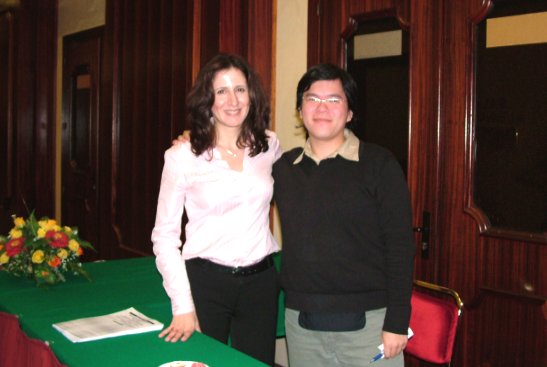
At the end of the conference many excursions took place.
The overall impression of the meeting was
excellent.
WSEAS Administrative Council thank each
of you for
increasing the WSEAS Reputation by these wonderful and important
meetings.
See also:
http://www.worldses.org/feedback2005.txt